Adventures in Starless Skies
11/14/2022. Sometimes the stars get in your eyes, but a couple of pieces of software can clear them away. I've been using the Starnet module in PixInsight to unmask faint filaments in the Veil that go unnoticed amid drifts of faint stars near the plane of the Milky Way. 52 Cygni stays. I've banished the others from this 2h50m exposure (NGC 6960, 17x600s, unity gain, -15 ASI1600MM, Baader filter):
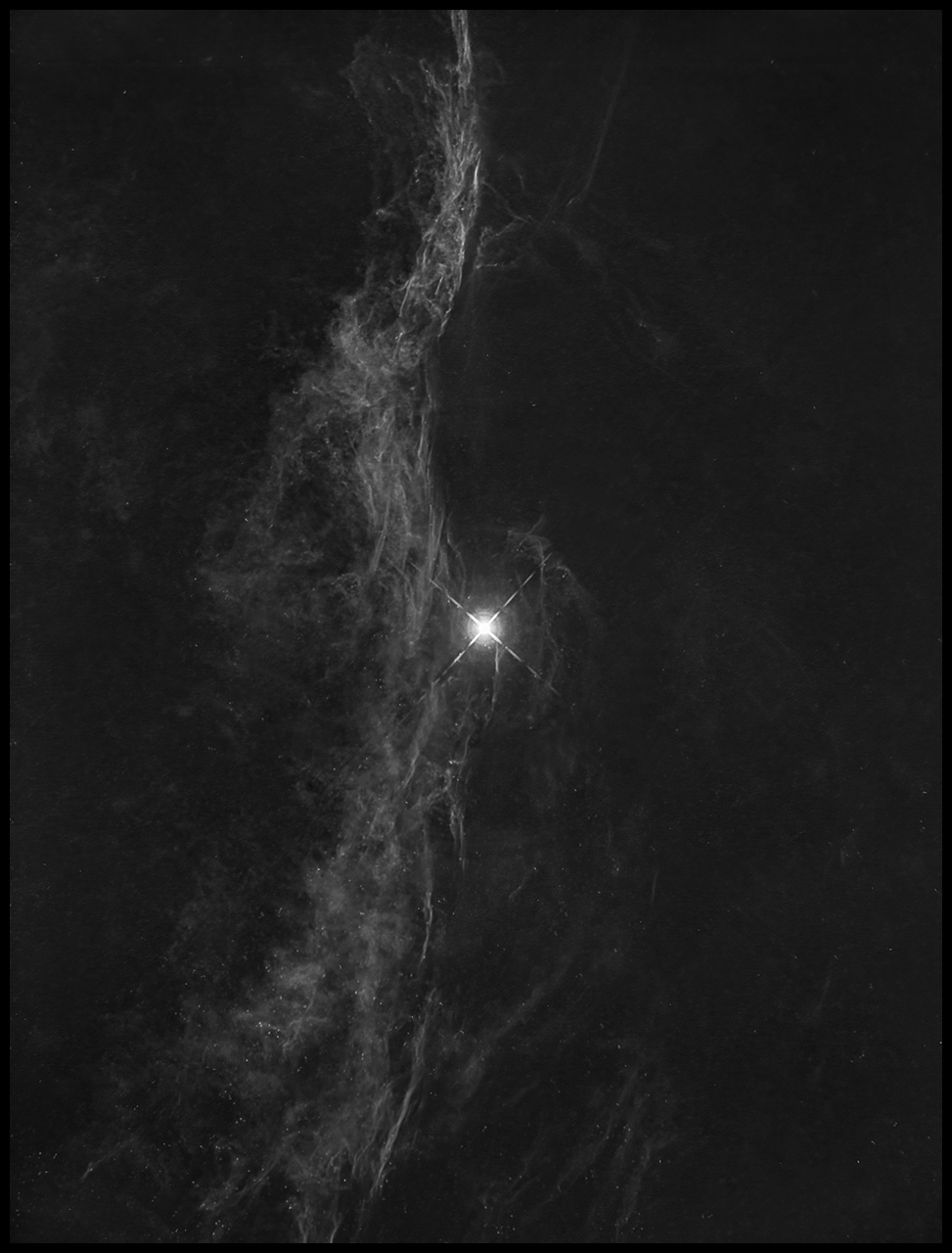
Guess what happens if you click it.
And then these "Ghosts of Cassiopeia" benefit from removing the stars (all except Gamma Cass, "Navi"), histogram stretching the nebulae, and then putting the stars back (IC 63 and IC 59, 30x600s):
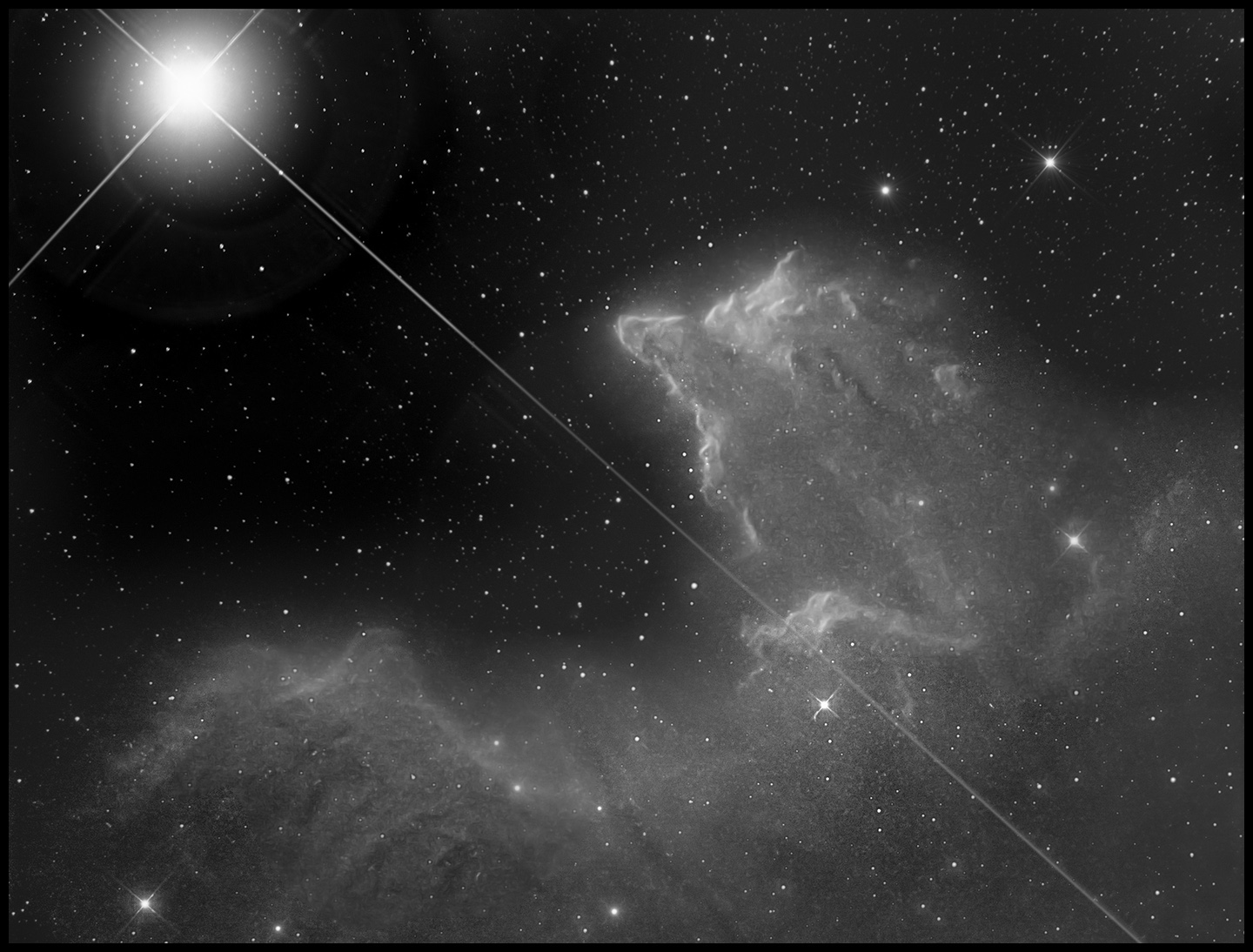
Gwan, click it!
I posted this to George Kelley, Jr., who promptly named it the Fox Head Nebula. Aptly. I see not only the tilted head but the raised ears and the swirling tail.
Michael Knowles sent me his kudos on some recent work which helped to crystallize part of my attitude about this stuff. "I wonder sometimes if all I'm really doing is recreating the illustrations in the books I read as a kid," I wrote back, "out-doing the originals when I can, re-doing them when I can't beat them, aspiring to those that remain out of reach. Or maybe it's just my version of fishing. Everybody takes similar gear to the same lake and catches more or less identical fish, but somehow it's very satisfying."
Images of the Veil and M33 from the TimeLife science library book, "The Universe" whose covers I read off (it was compiled and sometimes reworked from Life magazine features), come to mind, as does the Sir James Jeams book mentioned on the previous page in the comment on the photo resolving M31 into stars. Then there are the overt efforts to recreate photos, like John Stofan's classic photo from The Sky Observer's Guide and Outer Space Photography for the Amateur, and the lunar shadow compilations from various S&Ts.
Technical aside, talking to myself: I've got to rebuild that search function! [Done, I think. Give it a whirl. Nope. Only indexes through page 209. Fixed! I set this up ages ago in its own directory ("search"), and that's where the Zoom Index output files need to go. Note that "!consolidated..." was a red herring; it works but is not needed.]
11/17/2022. Last night I started with a detail in the North America Nebula, mostly IC 5070, which includes (or is included in) the Pelican Nebula. It makes a killer star-free image:
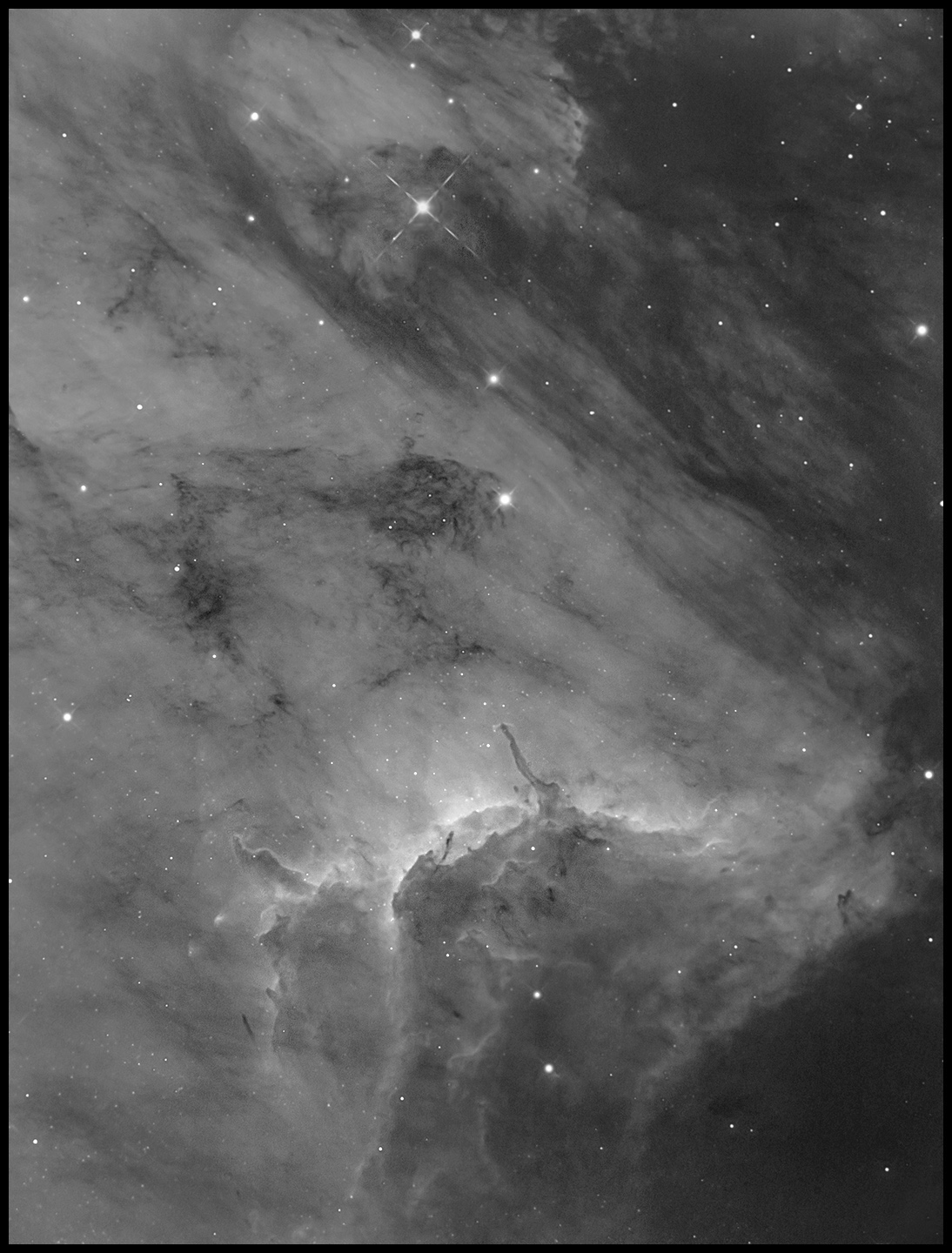
23x600s H-a
starless + bright stars
After examining these details within the North America Nebula, I picked up a very different subject as it emerged from meridian pine. (Next page!)
11/16/2022. More details in the North America Nebula attracted my attention. Alas, setting the proper filter in the filter wheel did not. Here's what you get if you accidentally expose for 600 seconds through the Luminance filter when the H-a filter was intended. For L, 60 seconds would have been a more appropriate exposure. At least it gave me an unexpected opportunity to compare broad- and narrow-band images of the same subject (the "northern gulf coast" of the North America Nebula):
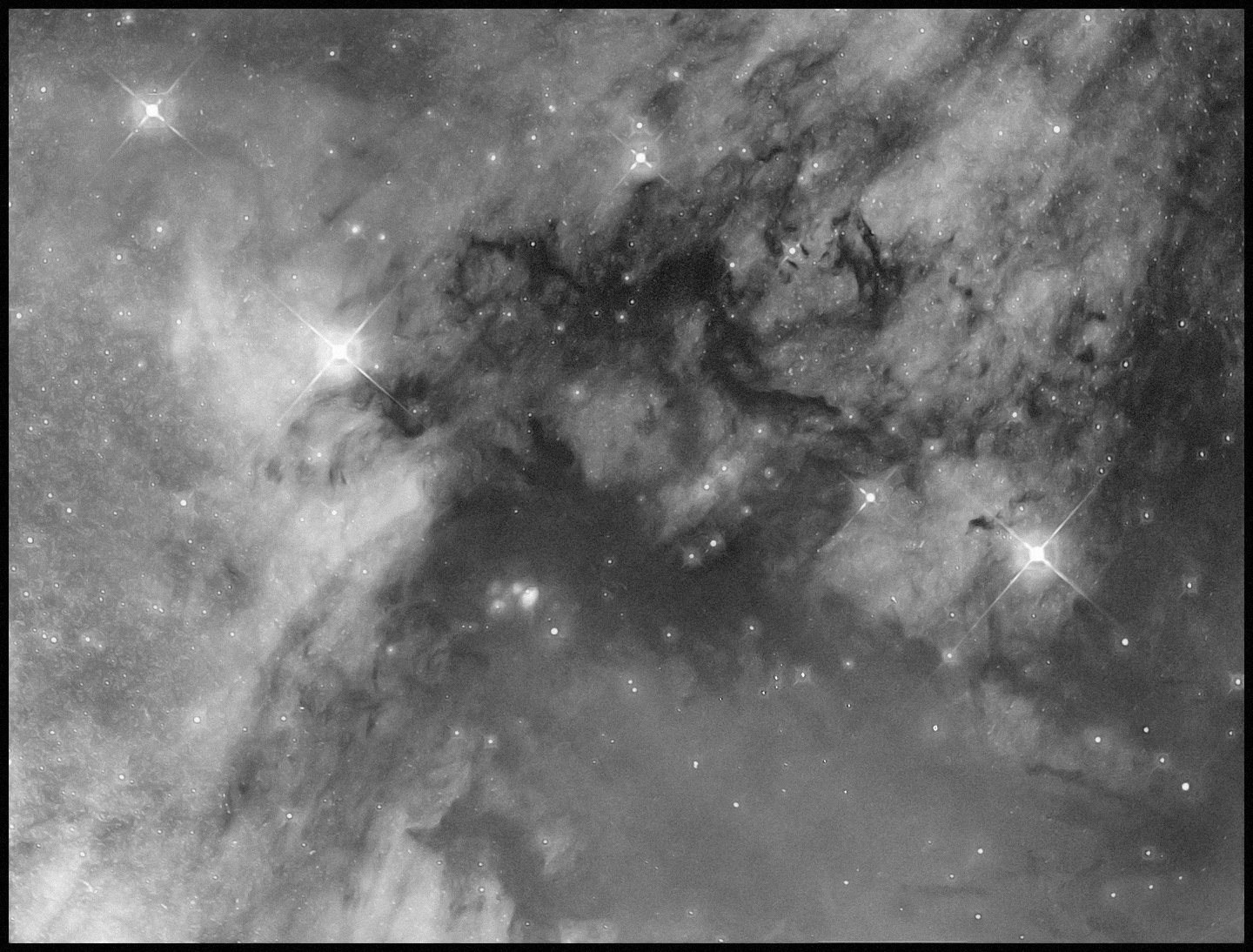
Part of NGC 7000
15x600s L
Two nights later, I tried again using the proper filter to image the same field with the same 600-second subframes:
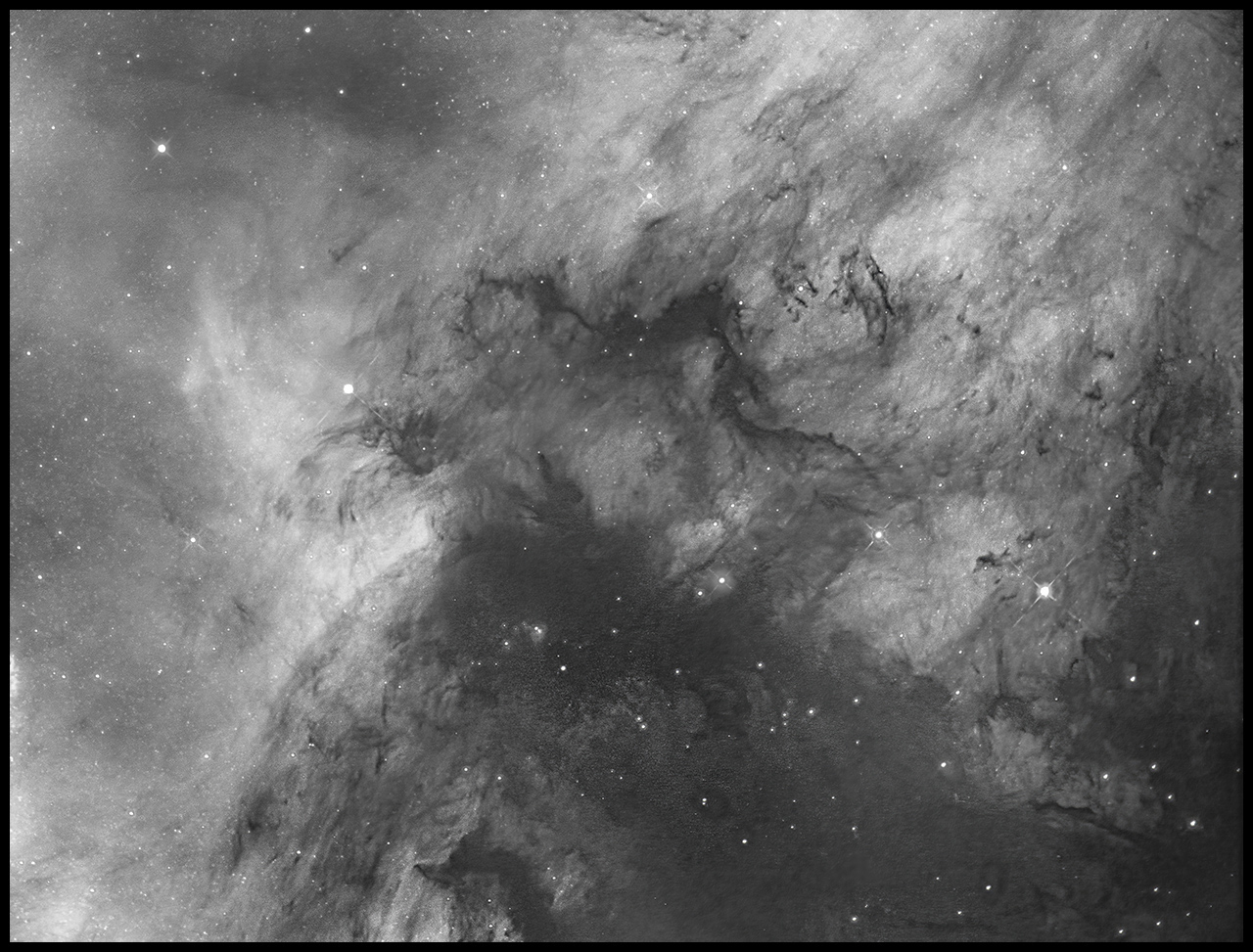
Same part of NGC 7000
20x600s H-a
In both cases, I've removed the stars using Starnet in PixInsight then added them back in order to treat the nebulae and the starfield separately.
:: top ::
|